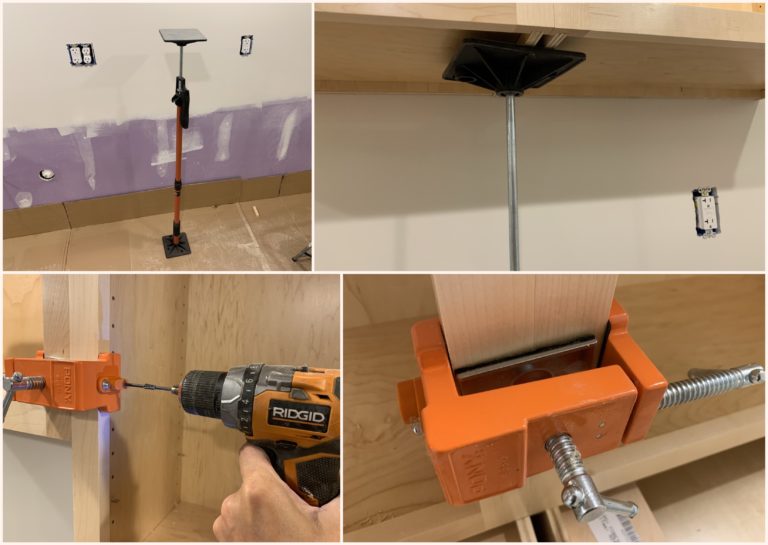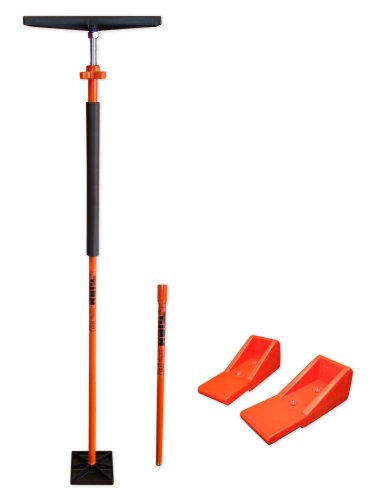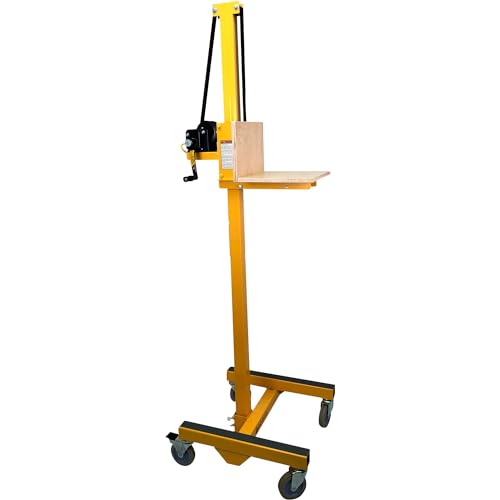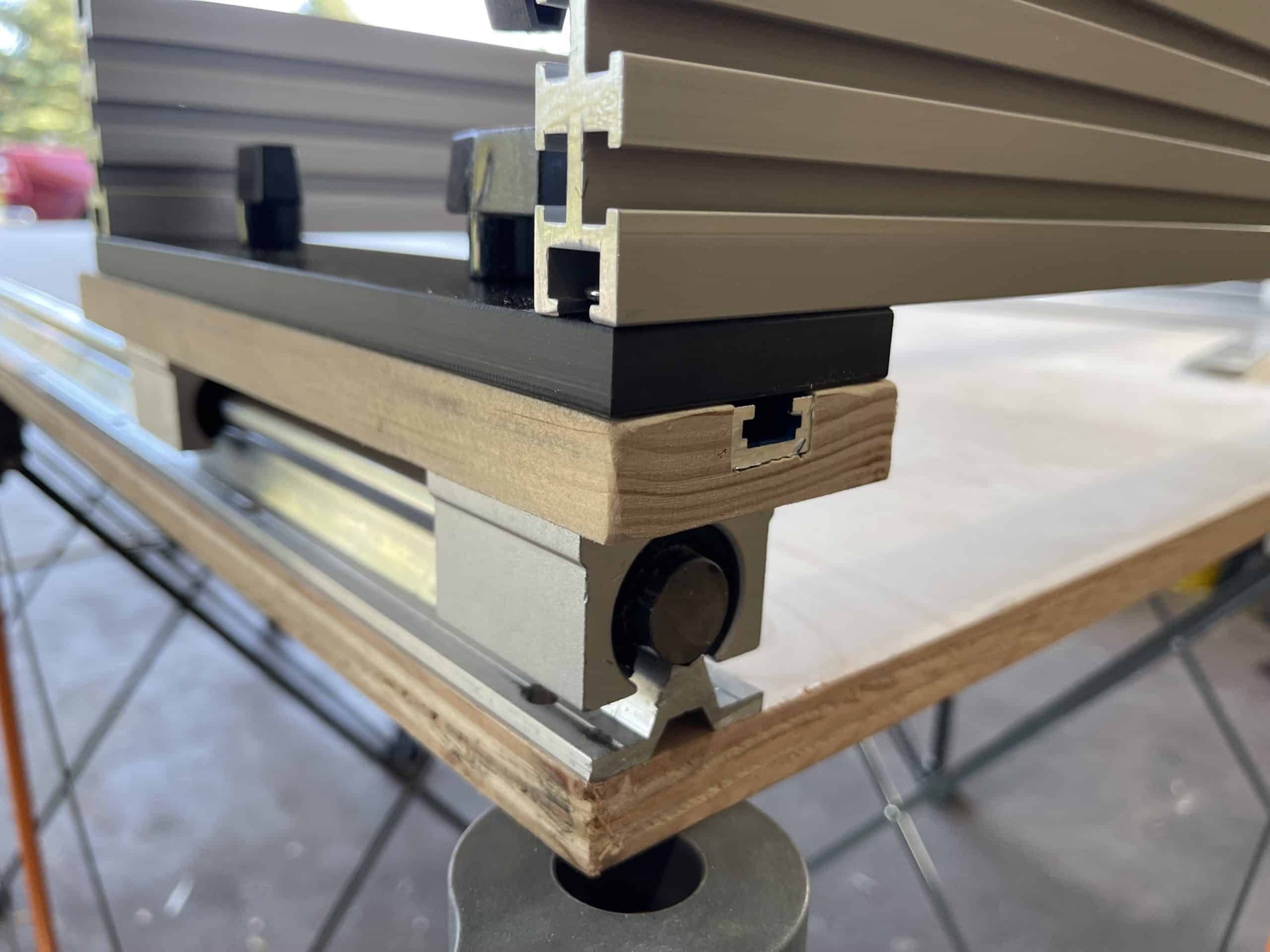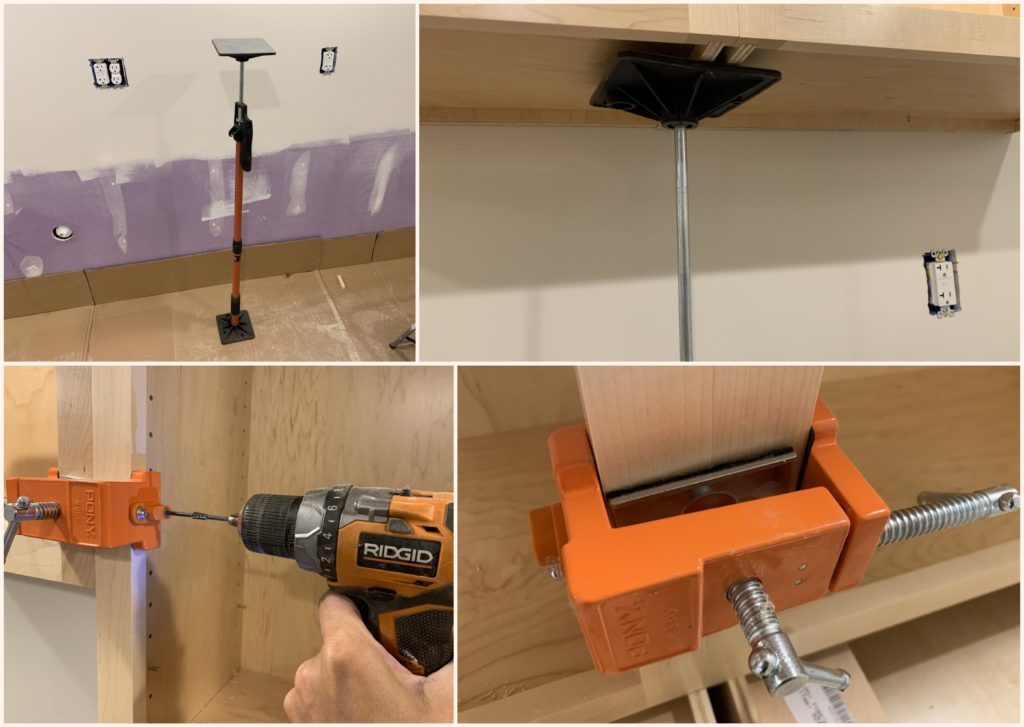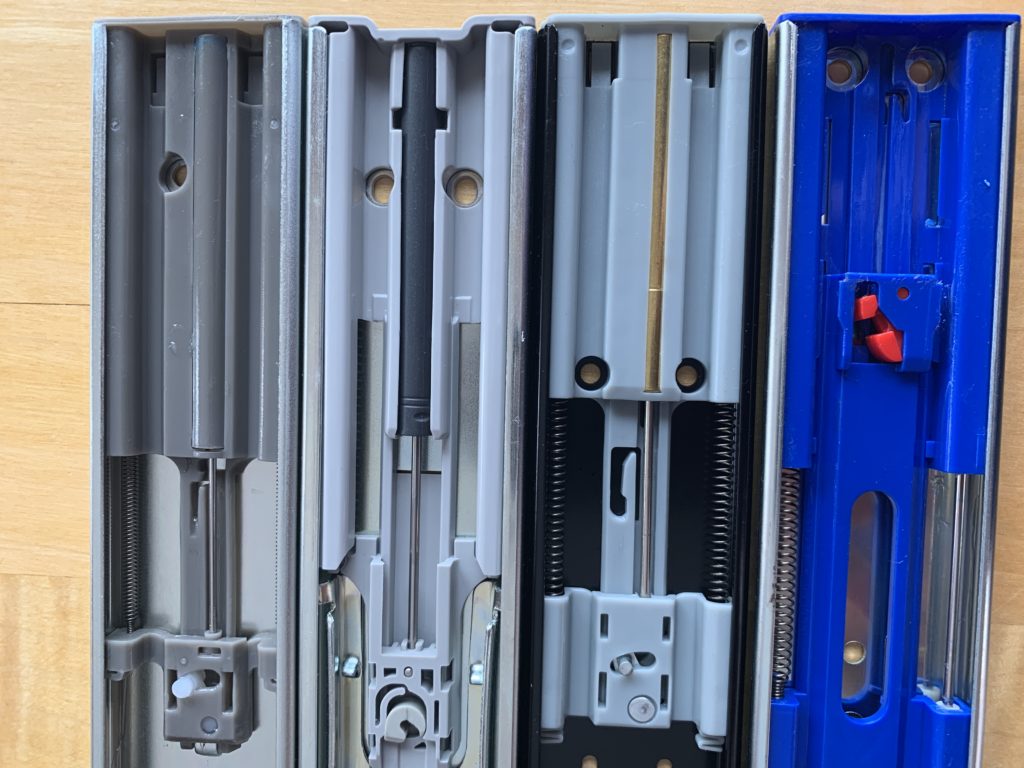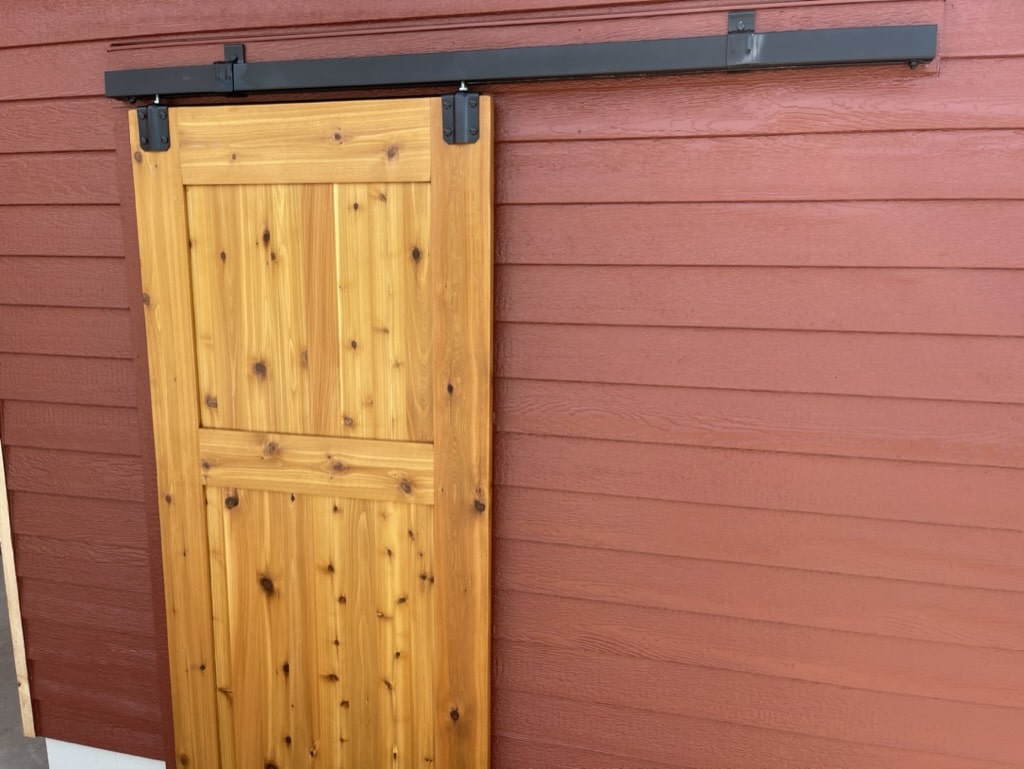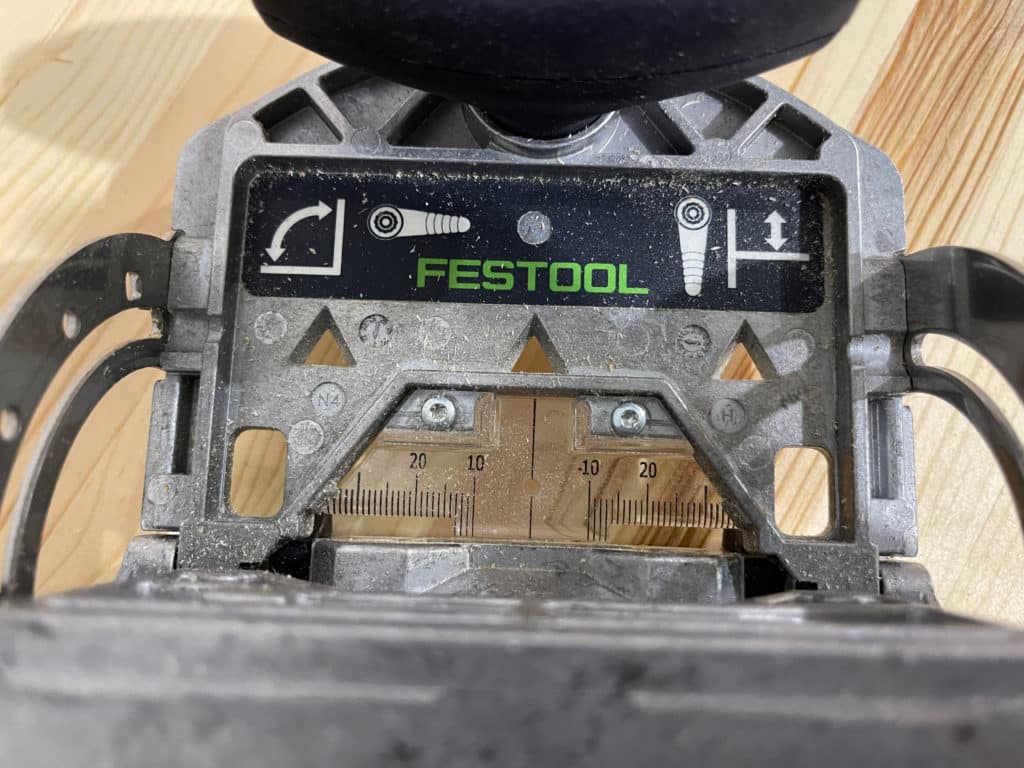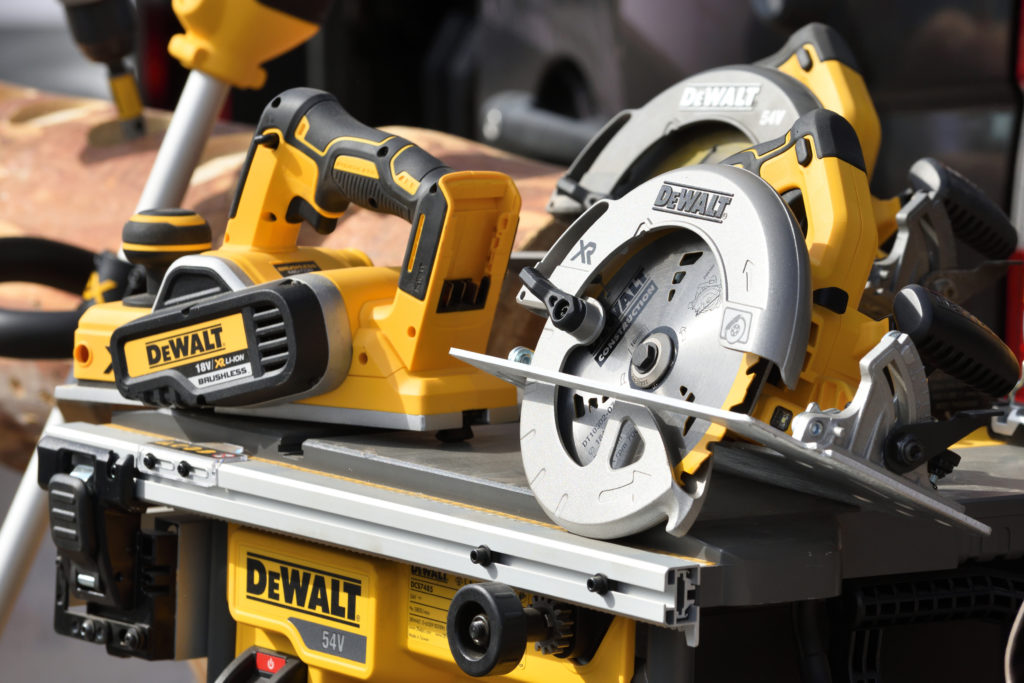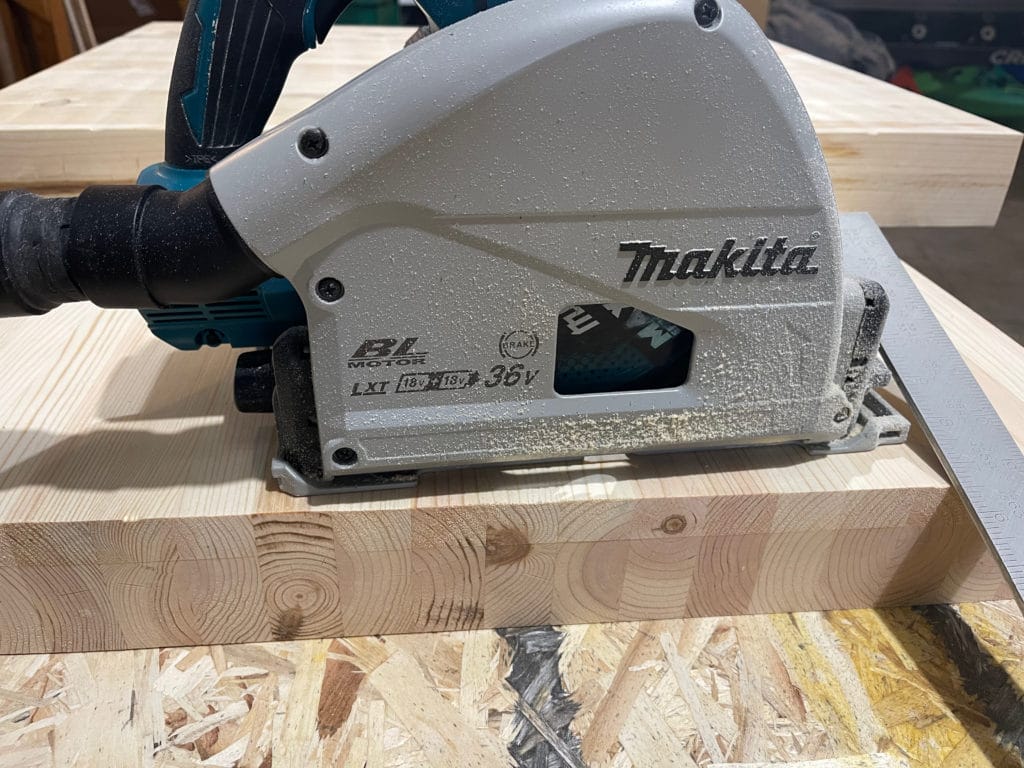FastCap Upper Hand "3rd Hand"
BEST: FASTCAP UPPERHAND
QUICK GUIDE:
- T-JAK PRO – best for professionals, the T-JAK is a heavy-duty cabinet jack that can take abuse job after job with the most rugged jack design. See on Amazon or T-JAK
- FASTCAP LITTLEHAND – This compact jack can install upper cabinets when a base cabinet has been installed. See on Amazon
- VIKING ARM LIFT – base cabinets must be properly leveled and shimmed, and this unique lift will support the cabinet. Buy on Amazon
- CABINETIZER 72 – cabinet jacks only hold a cabinet in place, but a cabinet lift like the Cabetnizer 72 will, well, lift and hold. See on Amazon
- FASTCAP THIRD HAND – easily the most versatile, this jack can lift and hold trim, dust shields, and more. See on Amazon
Cabinet jacks are a must to install upper cabinets. First, cabinet jacks take the weight off you while you clamp and screw the cabinets. But cabinet jacks are versatile and can be used later for anything from installing microwaves to cast-iron extensions on your table saw (I’ve done both).
What makes for a great cabinet jack?
We recommend the following when deciding:
- Length is the #1 factor, and installing cabinets is usually done uppers first. So, a jack with a reach from 54-90″ is preferred.
- Durability and construction to withstand abuse and heavy cabinets
- Fixed versus articulating feet with pads
In this guide, we’ve purchased and tested jacks for cabinet installations. While professionals may opt for the sturdy T-Jak, any DIY project will enjoy the budget price and robust build of the FastCap Upper Hand or Little Hand.
Top Brands: Both FastCap and T-Jak are the original innovators in cabinet jacks and are the target of many initiation and knock-off brands. While saving a few dollars is tempting, a brand name is generally worth the cost. We have both the FastCap UpperHand and LittleHand in our shop. A unique solution is the pinch prop and something on our to-do list to try.
Page Contents
Buying Guide
Our Experience
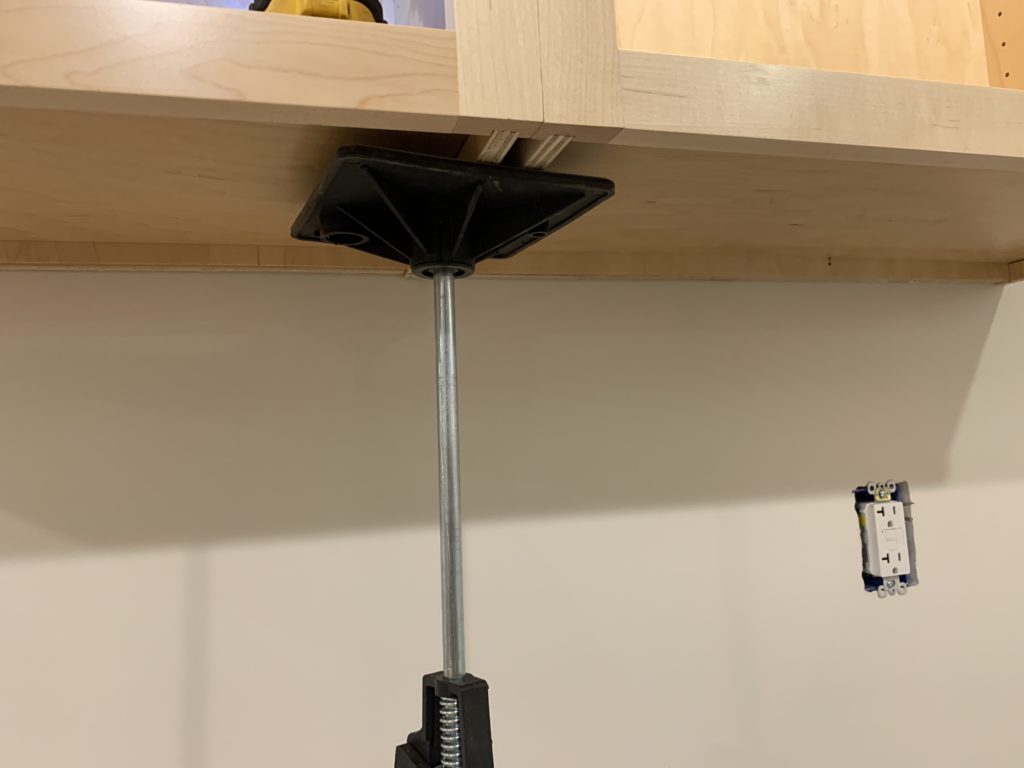
After installing cabinets with and without a cabinet jack, we know the value of these inexpensive helping hands far outweighs the cost. From reducing back strain to improving the finished quality of the cabinet job, we won’t install a cabinet without one of these tools.
We’ve also used our FastCap UpperHand to replace microwaves, hold cast iron extension wings on table saws, and do other lightweight tasks.
Types of Jacks
There are four types of jacks for cabinets:
- Upper cabinet jacks are used when the base cabinets are not installed
- Over-base jacks are shorter (12-24″) and used when installing the base cabinet.
- Base jacks are used to lift base cabinets while shimming.
- Lastly, a cabinet lift is a fourth type of jack that combines holding the cabinet in place with a mechanical lift to allow for a solo installation.
Professionals often have all four types of jacks, as installations are frequently different.
Features to Consider
- Maximum and minimum length
- Weight support
- Extendable lengths
- Size of top and bottom pads
- “Freestanding” vs. swivel heads
- Reach for microwave and fridge cabinets
- Brand reputation
- Micro-adjustment of the lever or adjustment screws
Imports & Imitators
While dozens of brands are available on significant retailers, we recommend sticking with the brands that both invented and continue to innovate with cabinet jacks: T-Jak, Viking, and FastCap.
How do we test to see if a tool is worth it in the long run? Well, we try to find the brand’s website. It is common for import tool brands to have a nonsensical name and no long-term parts or support, making that extra ten or twenty dollars saved lost in the long run.
Best Cabinet Jacks
With cabinet jacks, the question is always which ONE jack is the best. Instead, you’ll want to consider at least two or three jacks: a floor-to-upper cabinet jack, a base jack, and a utility jack that can hold crown molding.
1. FastCap UpperHand Cabinet Jack (Best DIY)
Available at: Amazon
For DIYers or professionals, an investment in the UpperHand is an excellent choice for quality and long-term warranty. And, with the preferred working range of 28 to 60″, this is a perfect choice for new cabinet installations.
First, this jack has a broad base and top pad, supports heavy cabinets up to 150 pounds, and has a 28-60″ reach and will work for almost all upper cabinet installations.
Key Features:
- Extension range: 28-60 inches
- Pads: 6×6 pads
- Adjustment: Heavy-duty upper squeeze handle for both a wide range of adjustments and micro-adjustment
- Quick-adjust tab to slide the jack to a rough height
- Positive locking ball dents
- The top and bottom pads have a rubberized gripping surface
Manufacturer:
- FastCap
- Warranty: Yes
- Manufacturing: USA
Review:
After unboxing this jack and installing cabinets, it quickly became a must-have tool for all future projects. We particularly liked the large 6×6 pads that allow the jack to stand independently. Or, when installing a cabinet, create a flat surface to rest the cabinet on. Our only issue, however, was the positive lock detents popped out of the jack when the arm was lowered forcefully. While easy to fix, this was annoying to deal with.
Pros:
- Excellent warranty
- Made in USA
- 28-60″ reach
- Quick-adjust detents
- Oversized 6×6 pads
- Versatile for other projects
Cons:
- It will not work for refrigerator cabinets without a sawhorse
- Ball detent displaced when using
2. T-Jak 104D Heavy Duty Cabinet Jack (Pro Pick)
The T-Jak 104D supports a range of 53-84″ and up to 108″ with an optional two-foot extension shaft. This cabinet jack, drywall lift, and HVAC support combination is perfect for contractors and cabinet professionals.
So why recommend the T-Jak over other jacks? Its rugged build and whopping 400-pound capacity make it a clear winner in overall design and durability.
Key Features:
- Extension range: 53-108″ inches
- Pads: Oversized upper pad
- Adjustment: Screw adjustment
- Quick-adjust tab to slide the jack to a rough height
- 400-pound capacity
- Drywall sleeves to support drywall without breaking
Manufacturer:
Review:
There isn’t a heavier-duty cabinet jack on the market. This is a must-buy for professionals investing in the highest quality cabinet installation tools, as its rugged design will offer years of use. The multi-purpose ability for HVAC, construction, microwave installation, overhead drywall, and even crown molding makes it the multi-use cabinet jack of choice for contractors.
Pros:
- Heavy duty construction
- Multi-purpose
- Wide range of reach with extension arms (1,2 or 3-foot)
- Heavy-duty screw adjust
- Oversized pads
- 400-pound capacity
Cons:
- Cost and availability
3. FastCap 3rd Hand Support System (Most Versatile)
This is one of the most versatile cabinet jacks on the market, featuring a wide extension range of 5 to 12 feet with a 150-pound rating. And from the FastCap brand that woodworkers and contractors trust for reliable products and high-quality warranties.
Why buy this jack? Beyond assisting with cabinet installations, it is the perfect size and capability for dust shields, crown molding, drywall, HVAC, panel lighting, and any other overhead lift-and-hold task.
And when you’re done with the job, it can be used in larger pickups as a load-containment system.
Key Features:
- Extension range: 60-144″ inches
- Pads: 3×3 pads with optional dust shield pads
- Adjustment: Lever
- Quick-adjust tab to slide the jack to a rough height
- 150-pound capacity
- Three-way adjustment with spring-loaded slide, lever, or ball detents
Manufacturer:
- FastCap
- Warranty: Yes
- Manufacturing: USA
Review:
This is a popular option for DIYers who want more versatility than the UpperHand jack as it can be used for many more tasks. Featuring the same design and lift mechanism, this jack excels at using its length and smaller pads to do tasks a traditional jack cannot.
Pros:
- Three-way fast adjustment (detents, spring loaded slide, lever)
- Multi-purpose
- 12-foot reach
- Warranty
- Use for dust shields
- 150-pound capacity
- Available in bulk with a carrying bag
Cons:
- Small feet will not let this jack free-stand
- Lower weight rating than the TJAK-104D
4. T-JAK Mini-Brute (Short Jack)
Shown: FastCap Little Hand
A FastCap Little Jack works excellent for remodeling or upper cabinet additions when the bases are already in place.
With a 6×6″ top and bottom pad, these jacks will easily hold an upper cabinet. Place on top of a board spanning the lower cabinet (or counter for finished kitchens). Then, place the cabinet on top and use the lever to adjust it to its final height.
5. Best Jack for Base Cabinets
Shown: Viking Arm Lift
Professionals know that leveling base cabinets can be a chore – especially alone. With most cabinets requiring a shim in one (or more) of the cabinet corners, the installer is left to lift and then insert a shim in usually an awkward position.
The solution?
A jack that will securely lift the cabinet with precision.
6. Alternative: Cabinet Lifts for Both Raising and Holding
Shown: Cabinetizer 76 Lift
Lifting cabinets is a heavy job. With most cabinets made of 3/4-MDF or plywood, even small cabinets can easily weigh 75 pounds or more.
The risk for professionals? Injuries over years of lifting and twisting add up.
While cabinet lifts are generally $500 or more (there are a variety of options), they are also reusable for:
- Lifting loads into and out of a pickup bed
- Hoisting other heavy items onto and off shelving
- Microwave installations
7. Multipurpose pick: Two-in-One Stand and Lift
See on Amazon: Rockwell Jaw Stand
If you plan to install your base cabinets first and are curious if you’ll use a cabinet jack later, this might be your best option.
For example, while other jacks are good at jacking, the Rockwell JawStand will do both. While NOT as good of a jack (due to its design), it will offer up support and turn into out-feed support later.
How to use a Cabinet Jack
If this is your first time installing cabinets, starting with the base cabinets is tempting.
But in most cases, this will lead to more issues, heavy lifting in awkward positions, and the potential for damaged base cabinets.
Why I Install Upper Cabinets First
I’m the kind of carpenter that doesn’t build things on the floor, lift something more than I need to, or make a mess I don’t have to.
So it sounds tempting to use the base cabinets as a resting place for the upper cabinets.
Well, unfortunately, it creates a few issues:
- You will be leaning over the 24″ deep bases for *everything*
- Increased risk of damaging the base cabinets with your tools
- Awkward lifting angles, even with a jack
- And, to use a jack, you’ll need a sturdy plywood base spanning the lower cabinets
But, if you’re adding a cabinet to an existing kitchen (rare!), there might be a few uses for a shorter jack.
Two Jacks are Better Than One
If you’re installing with a partner, you’ll have the luxury of using two cabinet jacks instead of one.
And by doing so, you’ll gain the advantage of stability as you install shims and screw the cabinets to each other.
Using a Jack by Yourself
With most upper cabinets maxing at 48″, you can lift the cabinet yourself.
And that’s when a free-standing jack, like the UpperHand, is helpful to allow you to lift and rest the cabinet in place. Then once the cabinet is set:
- Use the adjustment lever to set the height of the cabinet
- Then, install screws into the adjacent cabinet
- Insert shims against the wall and screw the cabinet to the wall as needed.
- Release the jack
Seven other uses after the project is done
For $50-100, you can re-use a miter saw, cordless drill, or other cabinet installation tools.
But what will I do with a cabinet jack when the project ends?
Here are seven things you can use a jack for after the kitchen is installed:
- Use as a load bar in your truck to prevent shifting of cargo (the FastCap 3rd Hand works best)
- Make dust shields for drywall projects
- Hold microwave cabinets in place during installation
- For the taller jacks, like the T-Jak, hold drywall to the ceiling
- Use as a spreader for framing projects to nudge (or hold) walls in place
- Support laser levels for tile projects
- Hold deck beams in place during the rough framing
Cabinet Jack and Claw
After you’ve set the cabinet on the cabinet jacks, the next task is to install shims and cabinet screws. And that’s where the cabinet claw comes into play.
Obviously, the cabinet claw will only work for face frame cabinets, so for a frameless design, you’ll want to consider the FastCap Jack of all Trades (above) that will provide a secure grip if the cabinet is installed. And it even doubles as a cabinet jack for base cabinets.
Frequently Asked Questions About Cabinet Jacks

How do you hang upper cabinets yourself?
Upper cabinets are best installed using a cabinet jack to hold the cabinet in place so your hands are free to screw the cabinet to the wall.
What is the best cabinet jack?
The proper cabinet jack combines the overall weight of the cabinet and its height. If an upper cabinet is installed over an existing counter, the best jack is a short one. However, a cabinet jack that reaches up to 80 inches is preferred when installing cabinets from the floor. Lastly, there are cabinet jacks that can lift base cabinets while shimming.
How many cabinet jacks do I need?
You can generally use a single jack for upper cabinets under 18″ in width. However, for cabinets over 18″, two jacks will allow the installer to balance the cabinet during installation easily. Due to most upper cabinet lengths at 24-36″, two cabinet jacks are recommended.
Summary
Perfecting a cabinet installation requires patience and muscle. Rather than have a lack of muscle power get in the way, invest in this simple tool to aid your cabinet installation.
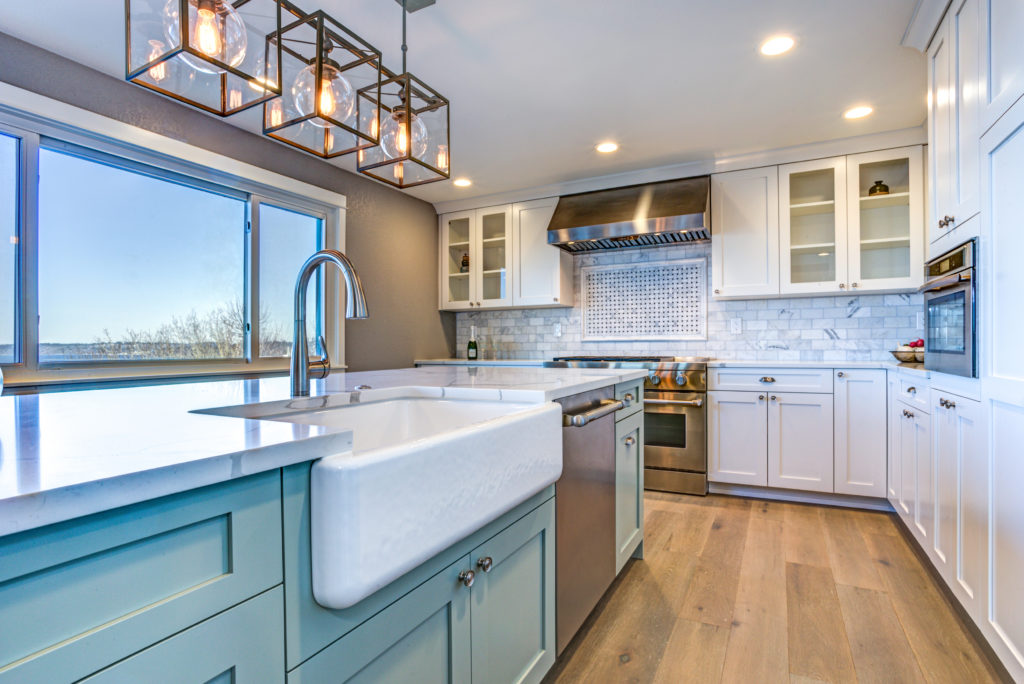
Cabinet Installation Series
Planning & Tools To Install Cabinets
Guides for Cabinet Installation
Finishing Cabinets With Molding and Hardware
- About the Author
- Latest Posts
Eric has been a professional woodworker for over thirty years and has worked in small cabinet shops making everything from kitchen cabinets to hand-made furniture. Now working from a home woodworking shop Eric is sharing his passion for woodworking, tool advice and how-to knowledge from his Minnesota-based woodshop.
